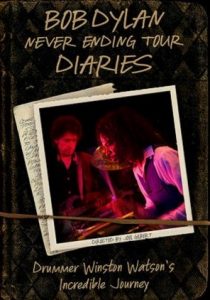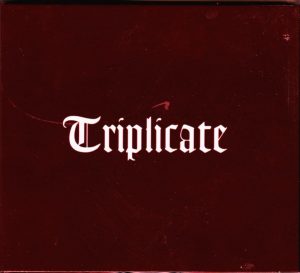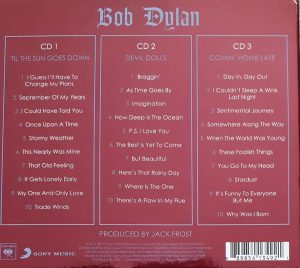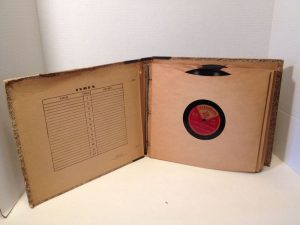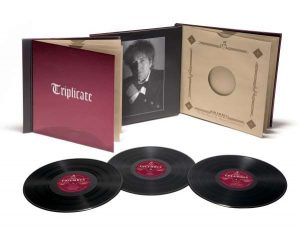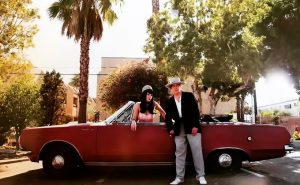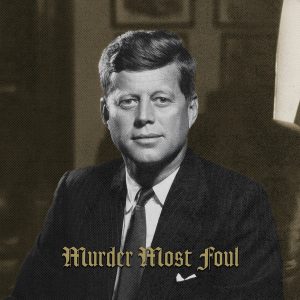By Mike Johnson (Kiwipoet)
At the start of my previous post, I spoke of the special musical alchemy Dylan created in 2003 from the mix of harmonica, piano and voice, music that is exuberant and irrepressible, rollicking and turbulent. These qualities make 2003 a standout year, despite the growly roughness of Dylan’s voice. Even without the wailing harp, those qualities are still evident.
Besides the old favourites, Dylan surprised his audiences with two new songs for the NET. ‘Saving Grace,’ from Saved, 1980, had not been performed since the glory days of 1981. It is a rare song in the Dylan opus in that it is driven by gratitude, gratitude to God and to love’s saving grace. It belongs beside ‘What Can I Do For You?’ also from Saved. In his book on the NET, One More Night, Andrew Muir comments
‘It was asking a lot to expect Dylan to be able to sing this song properly, demanding as it does a sweeping devotional vocal to convincingly convey the depth of feeling and intent behind the simple words. Asking too much, as it transpired. Dylan’s trademark elongated endings sounded strained almost to the point of parody…The rest of the year’s problems were foreshadowed here, not least Dylan’s ever-growing need to repeat words to make lines fit: ‘all, all I’m seeing’ and ‘so many many times.’
Muir is referring to the first concert (6th Feb), and while it may be terribly unfair of me to offer a performance from two months later (30th March) as a way of meeting Muir’s comment, Muir doesn’t say that the performances of the song grew better as the year progressed. Besides, Muir’s comment that Dylan’s voice wasn’t up to the job might apply to many songs and not just from the gospel era. ‘Saving Grace’ is no different from many other songs for which Dylan has to find new forms of vocal expression to accommodate his changing voice. I’ll leave it up to you to decide to what extent Dylan was successful in translating this song for his 2003 voice. For me, these intimations of mortality sound just fine in this cracked and aged voice, sound much closer to ‘sleeping in a pine box for all eternity.’
Saving Grace
Staying with Dylan’s gospel years, let’s look at ‘I Believe in You’ (from Slow Train Coming), not a new song for the NET but, by 2003, pretty much a rarity. If any song requires the full sweep of Dylan’s vocal range it is this one. The famous performances from 1980/81 had Dylan pushing his voice to its very limit in almost hysterical assertions of faith. The older Dylan cannot match these vocal pyrotechnics, but can still deliver the song powerfully and convincingly. It can be heard with a secular ear as a passionate love song; there are some loves we will hold to no matter what people say. (This one’s from 23rd Nov, London).
I Believe in You
You can hear the audience’s surprise when, at Hammersmith, Dylan begins ‘Romance in Durango’ (from Desire), not heard since the heady days of the Rolling Thunder Tour.
Dylan excels in writing dramatic monologues, defined by Google as ‘A poem in which an imagined speaker addresses a silent listener, usually not the reader.’ The narrator ‘reveals their feelings, inner thoughts, or motivations. Unlike a soliloquy, which is a private speech in which a character addresses themselves, a dramatic monologue is addressed to another character or to the audience.’
Some Dylan songs, like ‘North Country Blues,’ ‘Lonesome Hobo,’ ‘My Own Version of You,’ ‘Isis,’ ‘Knocking on Heaven’s Door’ and ‘Romance in Durango’ are clearly and obviously dramatic monologues, but it’s not always so clear. What about the street-wise hipster in ‘Subterranean Homesick Blues,’ or the past-haunted drifter of ‘Tangled Up in Blue’? You could argue that all Dylan songs are dramatic monologues, but this is not the place to do it. Enough for us to note here that ‘Romance in Durango’ is one of the most dramatic of these monologues.
A bandit takes his last ride with his love, Magdalena, dangling before her the prospect of the life they will be living, a life of freedom and gaiety summed up by ‘dancing the fandango.’ The setting is Mexico, and the details are hallucinations of hope with the prospects of marriage:
Then the padre will recite the prayers of old In the little church this side of town I will wear new boots and an earring of gold You'll shine with diamonds in your wedding gown
These hallucinations, however, are not all propitious. There’s a sense of impending threat:
The way is long but the end is near Already the fiesta has begun And in the streets the face of God will appear With His serpent eyes of obsidian
Then, suddenly, he is shot, mortally wounded, but the killing doesn’t end there, at least the prospect of it. The song ends with the continuation of violence.
Quick, Magdalena, take my gun Look up in the hills, that flash of light Aim well my little one We may not make it through the night
Again, this performance, spirited as it is, probably can’t stand against the best of the Rolling Thunder performances, but it is a virtuoso vocal that doesn’t drift too far from the album version.
Romance in Durango
One of the performances that, for me, best encapsulates the spirit of the 2003 NET is this ‘High Water’ from Red Bluff, 7th Oct. It has that open-ended, jazzy feel, with Dylan coming the closest he gets to playing lead piano. His piano playing here foreshadows how he will use the instrument after 2012, with syncopated clusters of notes and a driving beat. Above all, I think, it’s the joyousness of the performance that gets through. We get that exciting sense that anything could happen; anarchy is indeed let loose.
High Water
While the Hammersmith concert is highly regarded, and rightly so, I like the Red Bluff concert, both for the clarity of the recording and Dylan’s piano work. This ‘Bye and Bye,’ also from “Love and Theft”, swings sweetly along, a deceptive sweetness. On the surface we have a happy-go-lucky, relaxed sentiment, as open and bouncy as a summer day.
I’m rollin’ slow—I’m doing all I know I’m tellin’ myself I found true happiness That I’ve still got a dream that hasn’t been repossessed I’m rollin’ slow, goin’ where the wild red roses grow
The mention of repossessed dreams might evoke the era of the great Depression, but the last verse slips in a new level of threat:
Papa gone mad, mama, she’s feeling sad I’ll establish my rule through civil war Bring it on up from the ocean’s floor I’ll take you higher just so you can see the fire.
And that doesn’t sound so nice at all.
Bye and bye
At Red Bluff, we find Dylan giving his energetic ode to indolence, ‘Watching the River Flow,’ a boogie twist. Google defines boogie-woogie as a ‘heavily percussive style of blues piano in which the right hand plays riffs (syncopated, repeating phrases) against a driving pattern of repeating eighth notes (ostinato bass).’ That heavily percussive style is characteristic of all Dylan’s piano playing during this period, but you can hear it most clearly in this performance. Again the band gives him room for a piano solo but Dylan is more interested in playing the rhythm, albeit with some flourishes.
Watching the River Flow
While I find Dylan’s vocal performance in this ‘Visions of Johanna,’ possibly his greatest song, a little rushed and breathless, he finds a nice little piano riff to underpin it. Dylan has experimented with different tempos for the song, but mostly I find his skipping rhythms run counter to the dark, swirling nature of the lyrics. These are lyrics you need to sink into, become immersed. ‘Visions’ is a journey through a perilous shadow world, through hell, an urban, wee-small-hours of the morning kind of hell. Little of that feeling is conveyed by Dylan’s NET performances of the song, but it’s served better here by the piano than by previous upbeat acoustic guitar backings. Another excellent recording from Red Bluff. Pity he misses the lyric at one point.
Visions of Johanna
While on the subject of Dylan’s greatest songs, we also find at Red Bluff a sharply delivered ‘Just Like A Rolling Stone,’ the greatest rock song ever written according to the magazine Rolling Stone. This famous attack on insincerity, snobbery and bad faith has gone down in history, but like ‘Visions,’ has not always fared well during the NET. This performance from Red Bluff is triumphant enough, and sung with gusto. You might be put off by the incessant upsinging, but in this case it seems to hammer home the bitter irony that drives the attack. Fans of Dylan’s guitar will be pleased to hear him back on the job, picking darkly away at the melody.
Like a Rolling Stone
If there is one song more famous than ‘Just like A Rolling Stone,’ it would be ‘Blowing in the Wind,’ a song Dylan apparently wrote in ten minutes back in 1963. The protest here is directed at human indifference to suffering. Dylan again abandons the keyboard for this one, delivering a characteristically oddball acoustic guitar solo, quite minimal, built around a few repeated notes. This is also from Red Bluff.
Blowing in the Wind.
Since we are in the Dylan hall of fame, we can’t let ‘Knocking on Heaven’s Door’ go by. Dylan seldom fails to nail this one, and the Red Bluff performance is no exception. It’s got that sad, elegiac feeling, beautifully introduced by the keening voices of the band, suitably spooky and unearthly. We are so familiar with the song, it may be too easy to forget the dramatic context. A man, a lawman, is dying, bleeding out from a stomach wound – the song plays behind the death scene in Sam Peckinpah’s movie, Pat Garret and Billy the Kid. Dylan stays on the guitar, and delivers an impassioned vocal.
Knocking on Heaven’s door
We return to Dylan on the keyboard to finish this post with the wistful ‘Born in Time.’ From Under the Red Sky (1991), not one of Dylan’s most famous songs, but, to my mind, one of his most underestimated. All great Dylan songs are mood pieces, often, like ‘Visions’ after midnight moods, and this is one of those. We are but playthings of the gods, struggling in ‘the foggy web of destiny.’ Despite its sadness, it remains a love song, shot through with tenderness. But love, while it may be inevitable, is not easy, makes us too vulnerable, too exposed to the world.
Not one more night not one more kiss Not this time baby no more of this Takes too much skill takes too much will It's revealing
Another fine Red Bluff performance, Dylan in strong voice with that gentle piano quietly backing up the mood and pushing it all along. My favourite performance of the song.
Born in Time
That’s it for now, see you soon with more sounds from 2003
Kia Ora
We find that same joyousness in ‘Summer Days’ another song from ‘Love and Theft.’

